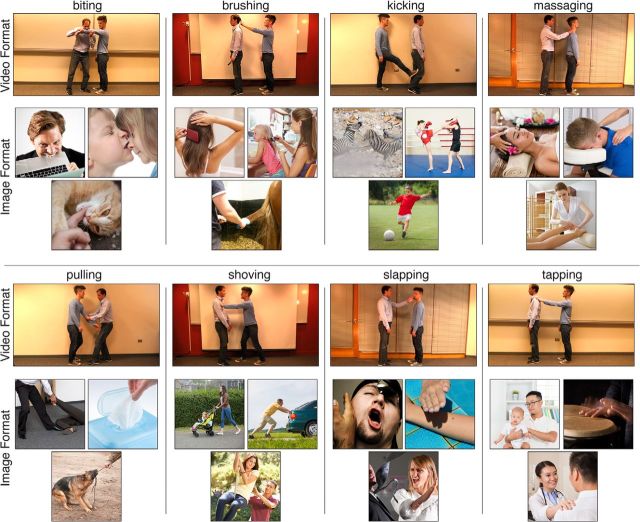Figure 1.
Examples of stimuli. Subjects viewed dynamic videos and still images of eight categories of interactions. For each action category, one still frame for the video format and three photographs for the image format are shown. In the video format, actor role (Agent/Patient), action direction (left/right), and scene background (four indoor backgrounds) were fully crossed within each action category. For example, in the brushing still frame depicted here, the blue-shirted actor is the Agent, the action direction is toward the left, and the background is the red wall, whereas in other brushing videos, this combination of factors was different (e.g., action direction toward the right instead of left). In the still image format, photographs from the internet were chosen to maximize variation in actors, objects, viewpoint, and scene context within each category. Image format examples shown here are photographs that we have license to publish and closely resemble the actual stimuli used.

